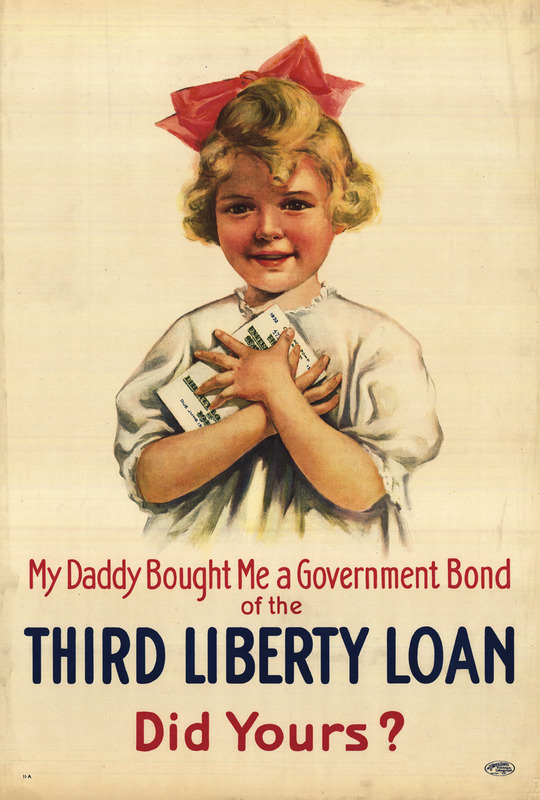Third Liberty Loan
"[Secretary of the Treasury William Gibbs] McAdoo's stated purpose was to sell bonds to the non-banking public, to final investors who would divert their resources from other uses and put them in the service of the war effort. But his policies in practice prompted massive bank borrowing. And because debt obligations in the hands of banks provide a basis for the creation of credit--for the creation, quite simply, of new money--McAdoo's tactics produced powerfully inflationary results. The changes effected in the Federal Reserve System's regulations and procedures in the spring of 1917 provided a reservoir of financial resources ready to be tapped; the stream of government debt obligations that began to appear in April drained that pool into all the channels of commerce, straining the carrying capacity of all, bloating some nearly to the bursting point. Between 1916 and 1920, the total money supply increased about 75 percent, and the consumer price index nearly doubled."
- David M. Kennedy, Over Here: The First World War and American Society

U.S. veterans hawk liberty bonds, purchased by citizens from the point of a bayonet, for the Fourth Liberty Loan drive in Philadelphia, October, 1918.
George D. McDowell Philadelphia Evening Bulletin Collection, Temple University Libraries, Urban Archives
(image 25 of 45)
United States
1917
75 x 51 cm

